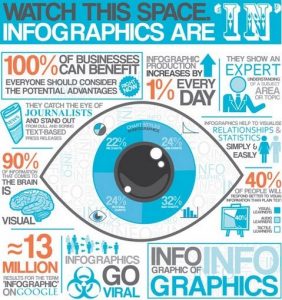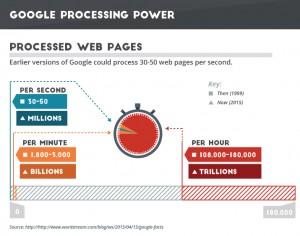
Remember the BCG model you learned as an undergrad? You know, COWS, STARS, DOGS, AND ?Well, we used to call question marks (?) problem children before it became politically incorrect [children aren’t bad; they do bad things]
Well, BCG is still out there pushing the envelope on marketing [and general business] strategy. This week, they introduced a study on Agile Marketing Organizations with a focus on the changing role of CMO’s — the top marketing honcho in most organizations — and the expanded view of marketing in organizations.
If it ever had a place in marketing, digital marketing ensured the demise of non-agile marketing. You know, marketing processes that took months or years of planning — especially when it comes to new product planning. Sometimes a campaign or product was obsolete before it even came out!
The idea of vetting everything before it comes out, or building prototypes without input from customers and vendors, the insanity of crafting perfect images are obsolete themselves. Today’s marketing organization needs to be agile, which means the CMO needs a vastly broader skill set then in the past.
The CMO skill set
In addition to sound marketing skills — team management, deep knowledge and experience with marketing concepts (like the 7 (or 4) P’s), market research, strategic planning, branding, and creativity — today’s digital marketing CMO needs skills in:
- Agile development
- Big data
- Programmatic buying
- Branded content
- Marketing analytics
- Innovation
- Agency management
In their first study since 2012, BCG found:
In our current study, CMO’s said that their greatest struggles are with organizational silos and ownership issues. the lack of technology- and tech-savvy talent, and the impact of scaling up their digital efforts.
Even if organizations find the type of talent needed, they struggle to retain these folks in a climate where such talent is highly prized.
Agile management

Borrowing tactics from software development, organizational marketing departments look and run using agile processes involving quick sprints rather than massively bloated campaigns. Constant improvement is the name of the game rather than waiting to release new websites, apps, and marketing tools. Marketing progresses through a series of initiatives rather than building a behemoth that no one wants.
Big data
Unless you’ve been hiding under a rock for the last few years, you realize the impact big data has on marketing. No longer can agencies survive with metrics on “awareness“, brands want to know more about customers, consumer behaviors, and, increasingly, what’s going on in the customer journey. [As a quick plug, we’re building massive customer insights through our hexsee platform].
CMO’s in the era of digital marketing need a deeper understanding of consumers based on big data. Hence, they need skills in business intelligence, as they need the ability to query analytics tools for real time insights rather than waiting for a BI person to run a query or being restricted to standard reporting. At a minimum, they need to understand analytics and hire top talent who can not only query big data repositories, but construct marketing stories that resonate.
Presumably, CMOs have input in building analytics teams that manage data in a data warehouse and ensure its validity, possess advanced analytics modeling skills to turn data into actionable insights, and then marry that data with marketing concepts.
Marketing effectiveness metrics
Gone are the days when metrics stopped at “awareness” or “conversion”. Today’s CMO knows that managing (and monitoring) the entire customer journey is necessary for effective decision-making.
Understanding the customer journey isn’t enough. CMOs need to understand which marketing actions feed into the customer journey and how segmentation variables impact what the customer journey looks like.
Programmatic buying
Speaking of data, more companies used programmatic buying in 2015 than in prior studies and most “best in class” companies have mastered programmatic buying not only in their digital marketing, but traditional marketing, as well.
Branded content
I’ve posted numerous times on the importance of branded content for sentiment, awareness, and SEO. ‘Nuogh said.
Marketing innovation
We’ve struggled with innovation and, for the first time since WWI, the US is falling behind as a world leader in innovation behind China and Israel. IMHO, the rise of financial leadership over strategic leadership underpins declining innovativeness as organizations set their sights on short-term financial performance over long-term product (and customer) dominance.
Think about the argument with John Scully that cost Steve Jobs his job at Apple. Scully wanted to focus on making improvements to the Apple II (which accounted for most of Apple’s sales) while Jobs wanted to create a totally different computer (and user) experience. Jobs wasn’t happy just making continuous improvements; he wanted to revolutionize the computer industry (and later the music and phone industries). If Apple hadn’t eventually woken up to the long-term cost of improvements, Apple would likely be defunct now.
If you want to understand how innovation impacts organizations and how it requires different management metrics, I posted this last year.
Products aren’t the only thing needed innovation. Dominos is a great example of a company constantly reinventing its digital footprint. I personally love the Pizza tracker for its novelty. Now, Dominos allows registered users to order pizza with an emoji. How cool is that?
Agency management
I started my career with a direct marketing agency — which was perfect training for digital marketing because it uses much of the same skill set with different channels.
In the old days, organizations managed their agencies by either choosing a single agency with multiple products including traditional marketing, email marketing, digital marketing, PR … or they hired a general agency that managed smaller, specialty agencies.
From my experience, neither of these options work well.
Most general agencies can’t effectively operate effectively across multiple products. I spent a summer working with the VP of a TOP global agency and can tell you how ineffective they are in managing multiple products. Traditional marketing is still the major focus on these agencies and everything else suffers from lack of support.
Having your general agency manage your digital agency and your PR agency and your email agency just doesn’t work. There are serious coordination issues and turf wars across agencies and everyone blames every other agency for problems. Duplication increases costs and CYA rules supreme. Inertia sets in.
Many best in class agencies solve some of these problems by bringing tasks in-house. Instead of hiring an agency to craft branded content, they’re doing it in-house. Analytics merge data across agencies with internal data to build a single consolidated understanding of effectiveness and to optimize operations.
Now what?
So, we’ve covered 7 new skills CMOs need to survive in the age of digital marketing from BCG.
I’d like to add a few of my own to the list:
- UX design
- Beginner level coding — HTML, CSS, Javascript
- Establish the right culture
UX design
The distinction between the CTO and CMO is blurring and overlapping skills are necessary. Part of that blending means the CMO needs skills in UX design to help build products customer love — especially if those are technology products.
Returning to Apple, their products aren’t the best in most categories, but they have the best UX. Google achieved dominance over Altavista and a host of other browsers because of their UX. This implies marketing and technology need to work closely to achieve market potential.
The CMO might not need to know how to create a prototype, but he/she should definitely be capable of drawing out what the customer experience looks like.
Coding
Sure, there are folks to code the website, the product, the app. A CMO (except in a small company) doesn’t need that kind of skill.
But, increasingly, if the CMO wants to understand the CTO, he/ she needs a rudimentary understanding of different coding languages and how things work behind the scenes.
Some analytics tools also require some knowledge of SQL and JASON.
Culture
It’s ever been more true that it is today — CMOs set the culture of their area and culture impacts success more than almost anything else within an organization.
CMOs who encourage continual learning (especially learning from mistakes), don’t tolerate “yes men” but want honest insights, who, rather than punish mistakes, want employees who push the envelope a little and fail sometimes, and who delegate responsibility (and authority) while recognizing the value of others’ ideas.
In addition, Forbes adds these skills that create a positive culture in an organization:
- Creativity
- Ability to delegate
- Honesty
- Intuition
- Great communication skills
- Confidence
- Commitment
- Positive attitude
- Ability to inspire
(211)






